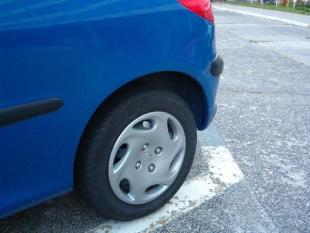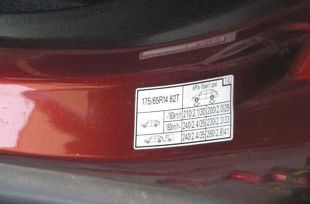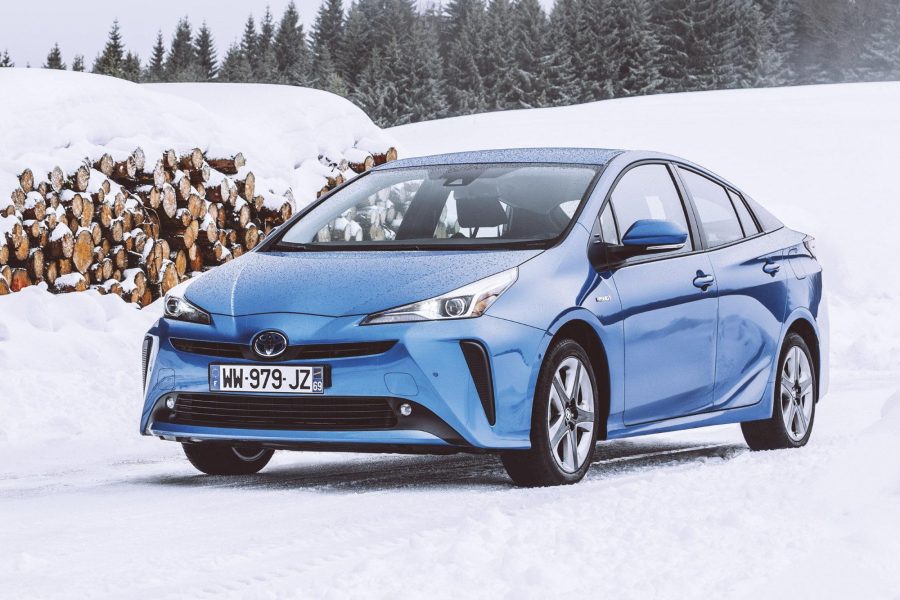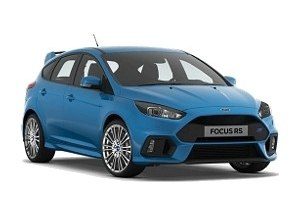
Correct tire pressure
Content
 Checking the correct tire pressure is a basic maintenance task that should be performed at least once every two weeks or always before every long trip.
Checking the correct tire pressure is a basic maintenance task that should be performed at least once every two weeks or always before every long trip.
Checking tire pressure regularly is not a normal maintenance procedure. Too low pressure can not only lead to irreversible tire damage in extreme cases, but also significantly affect driving safety and lead to increased fuel consumption. Therefore, regular checks are necessary.
Too little air means poor driving safety
 Experts from the German motorcycle club ADAC have determined that already 0,5 bar less air in the tire compared to the recommended one, reduces the stability of the car when cornering, and the braking distance can increase by several meters.
Experts from the German motorcycle club ADAC have determined that already 0,5 bar less air in the tire compared to the recommended one, reduces the stability of the car when cornering, and the braking distance can increase by several meters.
Less grip in corners
The situation is even worse when cornering on wet surfaces. A particularly loaded outer wheel of the front axle at a pressure lower than the recommended one by 0,5 bar transmits only about 80% of the forces in relation to a tire with the correct pressure. With a difference of 1,0 bar, this value falls below 70%.
In practice, this means that the car tends to skid dangerously. During a sudden lane change maneuver (for example, to avoid an obstacle), the vehicle begins to skid earlier than with the correct tire pressure, because the vehicle lacks stability. In this situation, even the ESP system can only partially help.
See also: You know that….? Before the Second World War, there were cars running on ... wood gas.
Increased braking distance
Too little air pressure on one front wheel of a car can significantly increase the stopping distance. With a loss of 1 bar, the braking distance on a wet surface can increase by about 10%. This means that during emergency braking from an initial speed of 100 km/h, a car with tires with a lower pressure than recommended will still travel at a speed of about 27 km/h when the car with tires with the correct pressure comes to a stop. The braking distance of such a car will increase from 52 to 56,5 meters. That is, for the entire length of the car! Also, the ABS system will not work optimally, due to different tire pressures (tires have different contact surfaces with the road, they behave differently when braking).
Less air – higher costs
 Less air pressure in a car's tires also means less money in your wallet. Higher rolling resistance tires increase fuel consumption by 0,3 liters per 100 kilometers. Not much, but at a distance of 300 km it will be almost a liter of fuel!
Less air pressure in a car's tires also means less money in your wallet. Higher rolling resistance tires increase fuel consumption by 0,3 liters per 100 kilometers. Not much, but at a distance of 300 km it will be almost a liter of fuel!
In addition, not only the tires of our car wear out faster, but also the suspension elements.
What is the pressure?
Drivers often do not know what the optimal tire pressure should be. Information about this can be found mainly in the vehicle's owner's manual. But who brought the instructions with them? And besides, who is reading this? In most cases, automakers have foreseen such a situation and information about the recommended pressure is placed on special stickers, usually placed on the fuel tank cap or on the door pillar on the driver's side. The recommended pressure can also be found in the catalogs available from tire shops.
If our car is not equipped with an information sticker, then it's a good idea to make it yourself. Thanks to this simple procedure, we won't have to search for the right data every time we have access to the compressor.
We must also remember that the pressure must be adapted to the current load.
Car manufacturers usually list two sizes: for two people with a minimum amount of luggage, and for five people (or a maximum number related to the number of seats) and a maximum amount of luggage. Usually these values are different for the wheels of the front and rear axles.
If we decide to tow a trailer, especially a caravan, then the pressure in the rear wheels should be increased by 0,3-0,4 atmospheres in relation to those recommended by the manufacturer. Also, always remember to check the condition of the spare tire before leaving and fill it with pressure up to 2,5 atmospheres.
See also: How to care for the battery?

